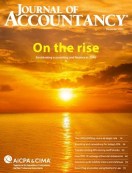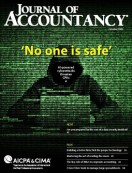- news
- ACCOUNTING & REPORTING
FASB updates guidance for hedge accounting, purchased loans
Related
Reviewing accounting standards updates for 2025
FASB issues standard to improve interim reporting
New SEC chair to CPAs: ‘Back to basics’
FASB on Tuesday published an Accounting Standards Update (ASU) aimed at clarifying and improving its guidance on hedge accounting.
“The new standard clarifies the application of previous guidance and addresses emerging issues identified by stakeholders, including those related to reference rate reform,” FASB Chair Richard Jones said in a news release. “The improvements will better reflect the economics of organizations’ risk management activities.”
According to the news release, ASU No. 2025-09, Derivatives and Hedging (Topic 815): Hedge Accounting Improvements, lets entities apply hedge accounting to a greater number of highly effective economic hedges in five areas:
- Similar risk assessment for cash flow hedges;
- Hedging forecasted interest payments on choose-your-rate debt instruments;
- Cash flow hedges of nonfinancial forecasted transactions;
- Net written options as hedging instruments; and
- Foreign-currency-denominated debt instrument as hedging instrument and hedged item (dual hedge).
For public business entities, the amendments are effective for annual reporting periods beginning after Dec. 15, 2026; for other entities, they are effective for annual reporting periods beginning after Dec. 15, 2027. Early adoption is permitted.
Updates on purchased loans guidance, FASB leases standard
FASB also recently published ASU No. 2025-08, Financial Instruments — Credit Losses (Topic 326): Purchased Loans, which aims to improve guidance on accounting for purchased loans.
According to a news release, the ASU addresses stakeholder concerns about the accounting for acquired financial assets, specifically that prior guidance related to the distinction between purchased credit-deteriorated (PCD) and non-PCD assets created unnecessary complexity and reduced comparability. FASB noted that its post-implementation review (PIR) process since issuing its credit losses standard in 2016 helped the board identify stakeholder concerns.
On another topic, FASB recently issued Post-Implementation Review: Leases (Topic 842).
According to a news release, the PIR concluded that the leases standard has achieved its objective of providing investors and other financial statement users with more useful information about a lessee’s leasing activities. However, the initial costs to implement the lessee requirements, along with the ongoing costs to apply those requirements, were significantly higher than expected. The report noted that lessor entities did not incur significant costs.
— To comment on this article or to suggest an idea for another article, contact Bryan Strickland at Bryan.Strickland@aicpa-cima.com.



















